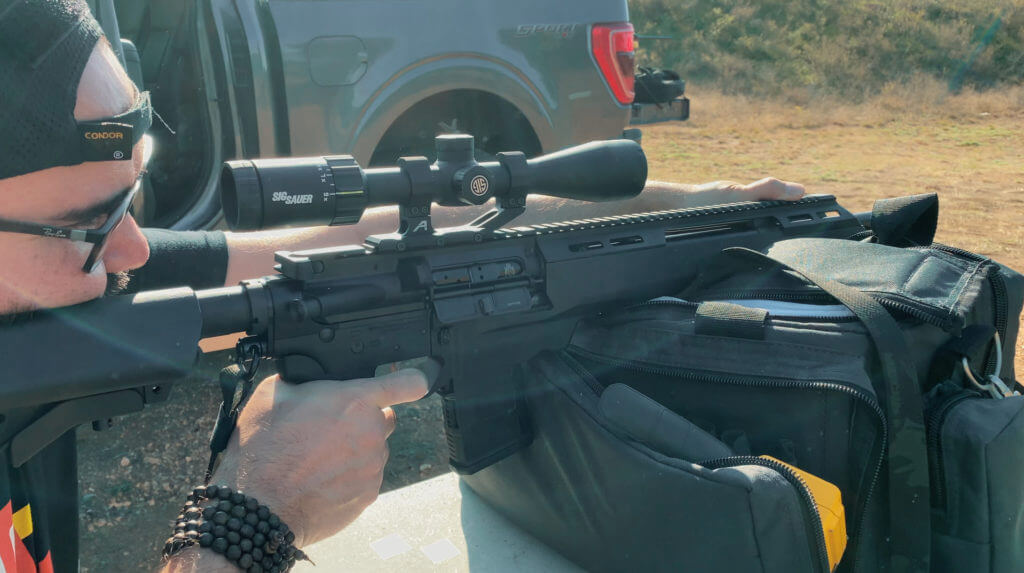
Background
The firearms industry dog-piles the latest trends in droves. Optics-ready pistols with front slide serrations? There’s a gun for that. Standard capacity sub-compact carry pistols? We got you. FDE or Coyote Brown? Why not both.
In recent years, backing precision rifles with a sub-MOA guarantee has become an emergent trend. The new Springfield Saint Edge ATC (Accurized Tactical Chassis) boasts a similar guarantee with some really interesting features. But how does it perform? We’ll get to that shortly.
The Saint Edge ATC comes in two models- the standard Edge version and the Elite model that features a two-stage Larue trigger and collapsible stock. Springfield was kind enough to lend me the standard Edge ATC which has an MSRP of $1549 and ships with a 20 round PMAG and a carrying case. The Elite model has an $1899 MSRP. Both rifles come with a sub-MOA guarantee. Needless to say my expectations were incredibly high at that price point.
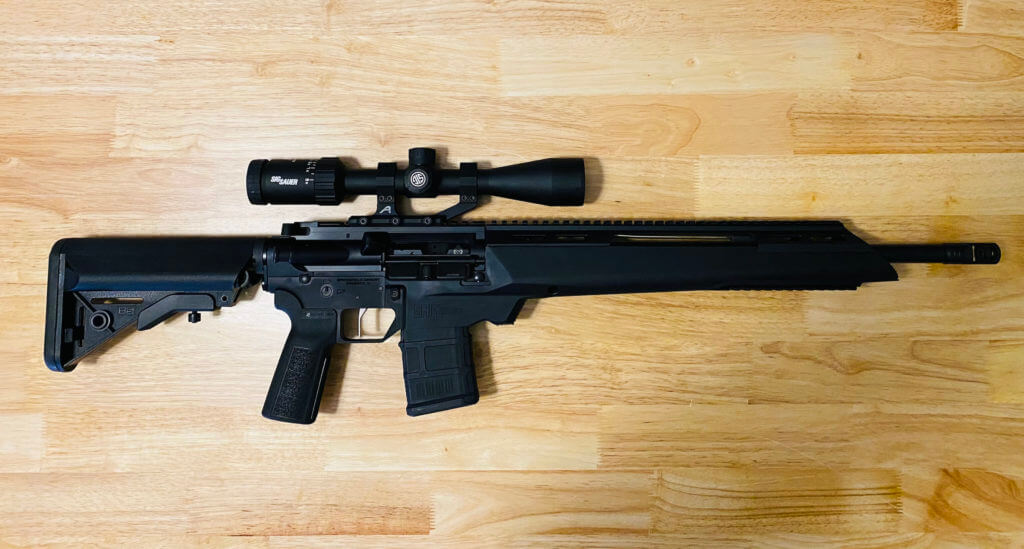
The Saint Edge ATC is the latest addition to the Saint lineup with precision shooting in mind. Here’s a rundown of the specs:
- 18″ Ballistics Advantage barrel chambered in 223 Wylde
- The barrel is melonite coated with a 1:7 twist
- Mid-length gas system
- ATC Chassis (more on that later)
- Free-Floated hand-guard
- One-piece monolithic lower receiver machined from 6061 T6 Aluminum
- B5 Systems SOPMOD stock and B5 Systems grip
- Flat match trigger
- Colors: Black and Coyote Brown.
The ATC Chassis
Upon unboxing the rifle, I’ll be honest, my initial reactions to the rifle’s cosmetics were negative. It’s big, thick and the cuts are abrupt and not pleasing to look at. For an AR, there’s enough going on here to make the engineers at KelTec blush. However, after spending some time with the rifle the quirky aesthetics have admittedly grown on me. I like to think of it as a modernized FAL in a way.
I applaud Springfield for taking risks and trying to do something different with the ATC Chassis. This system is unique in that the lower is a single piece that fixes itself to the free float hand-guard. The barrel, gas system and barrel nut are all truly free-floated and unobstructed. The fit is truly monolithic as there is no play in the system providing shooters a sturdy foundation to shoot from. The lower receiver extends and connects to the foreend of the handguard to create one continuous chassis that un-impedes or stresses the barrel in any way.
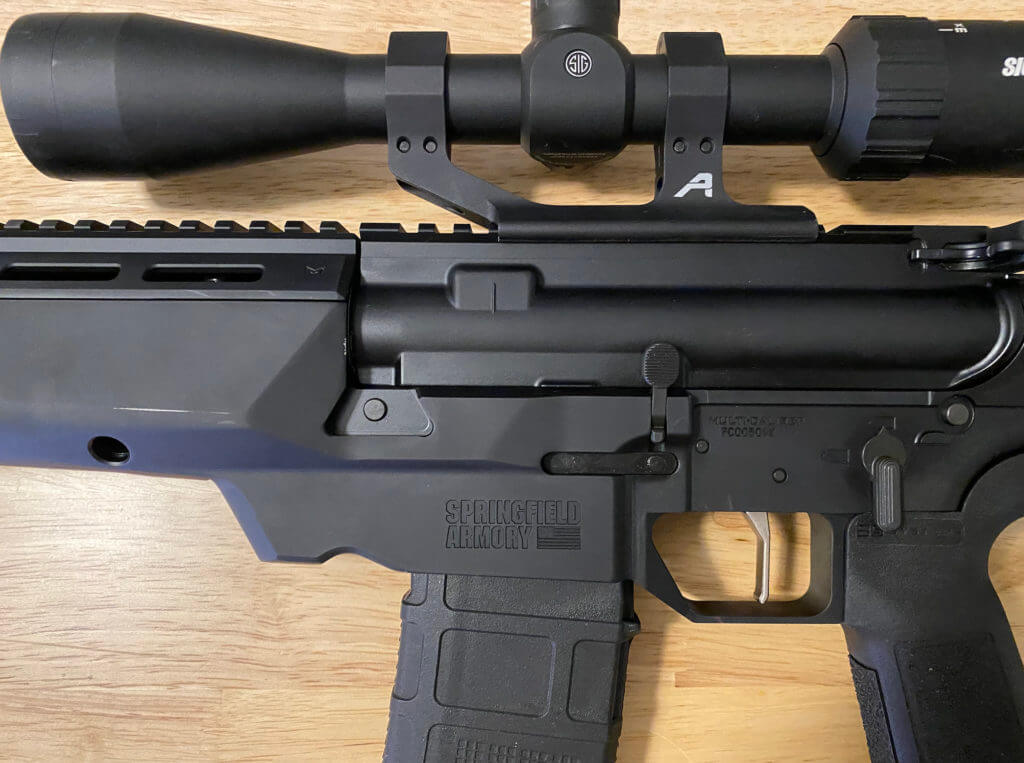
The trade-off here is the rifle is heavy. We’re talking barely under 10 pounds without a scope or magazine. That’s heavy but not uncommon in the precision shooting world. Albeit usually with a .30 caliber chambering. For that reason, I chose to outfit the rifle with a 1″ tube SIG Whisky 3-9x scope I had laying around mounted with an AeroPrecision ultra-lightweight scope mount. I threw on a Magpul bipod and I was ready to hit the range.
Zeroing and First Shots
The folks at Springfield generously provided 2 boxes of Federal Gold 77 grain Premium Match King for testing purposes. In their testing, they had experienced some really good results with that particular load. This is great ammo but I’ve always been more of a Blackhills 69 grain Match King kind of guy so I was curious how the two would compare.
While the sub-MOA guarantee is assumes a competent shooter and match ammo….. ammo is still difficult to come by so I was curious how the Saint Edge ATC would perform using cheaper ammo since that’s what’s readily available to most folks. I also loaded up some commonly available range ammo such as 62 grain M855 from Winchester and IMI Systems as well as Federal 55 grain American Eagle. If the cheap FMJ and M855 didn’t yield sub-MOA results I wouldn’t fault Springfield but I am a man of the people so I wanted to make sure I tested the people’s ammo as well as 2 highly regarded match loads.
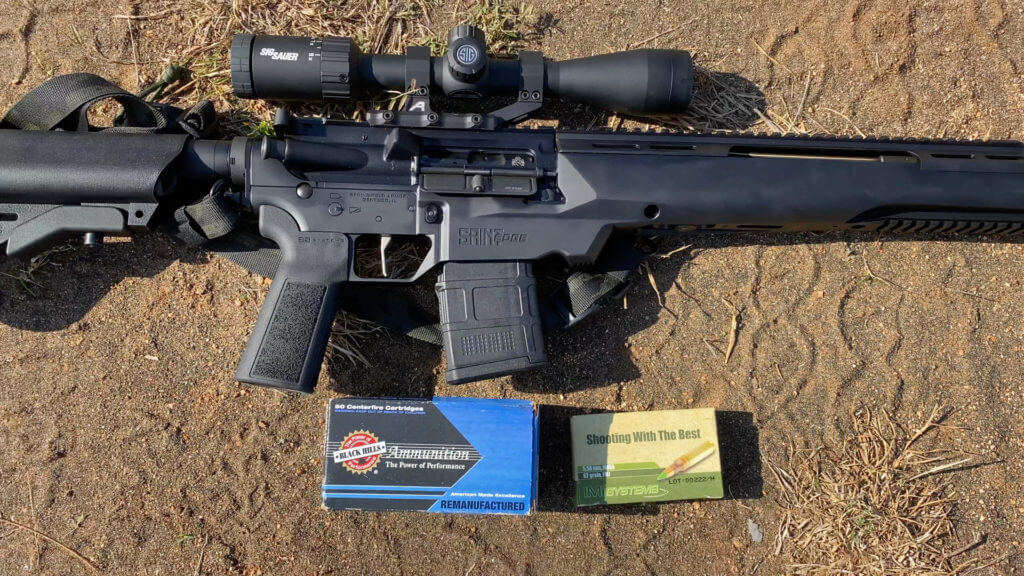
I’m not a huge fan of bench shooting these days because I like to move around. Even if I’m hitting steel plates at 250-350 yards I like to move from different positions and platforms. I’m willing to sacrifice a little precision to elevate my heart rate because it’s more fun.
The rifle is heavy. Shooting this off-hand is not recommended. I knew this but I want to go ahead and try anyway. I was able to make consistent hits off-hand at 50 and 100 yards on a 6″ plate with all ammo types I tested. Not bad but also not precision standards. Next I tested shooting a 4″ plate at 100 yards from my bag as well as Primos Shooting Sticks to test how it performed in unconventional stances. No problems there. However, I quickly began to hate the heavy, mushy “match” trigger. We’ll talk more about that at the end.
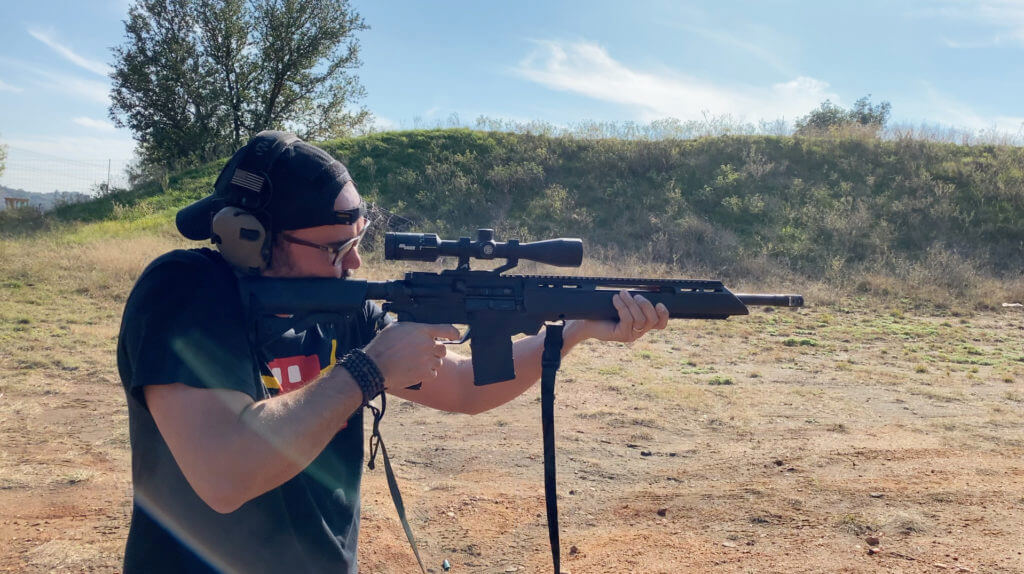
I found myself adjusting my shoulder position to accomodate for the heavy rifle off-hand. 0/10 do not recommend. 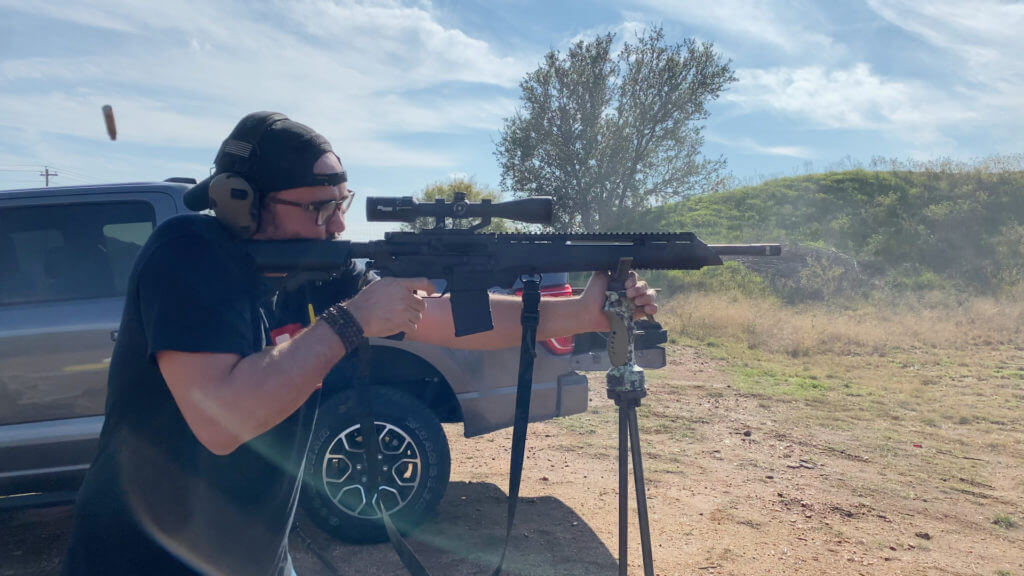
Shooting from Primos Bipod Shooting Sticks
Testing the Sub-MOA Guarantee
A sub-MOA guarantee is pretty bold. There’s a lot that can go wrong. I optimistically sat at the bench to do my best testing M855, Federal Gold and Blackhills loads. The pictured groups are about consistent with what I experienced through the day.
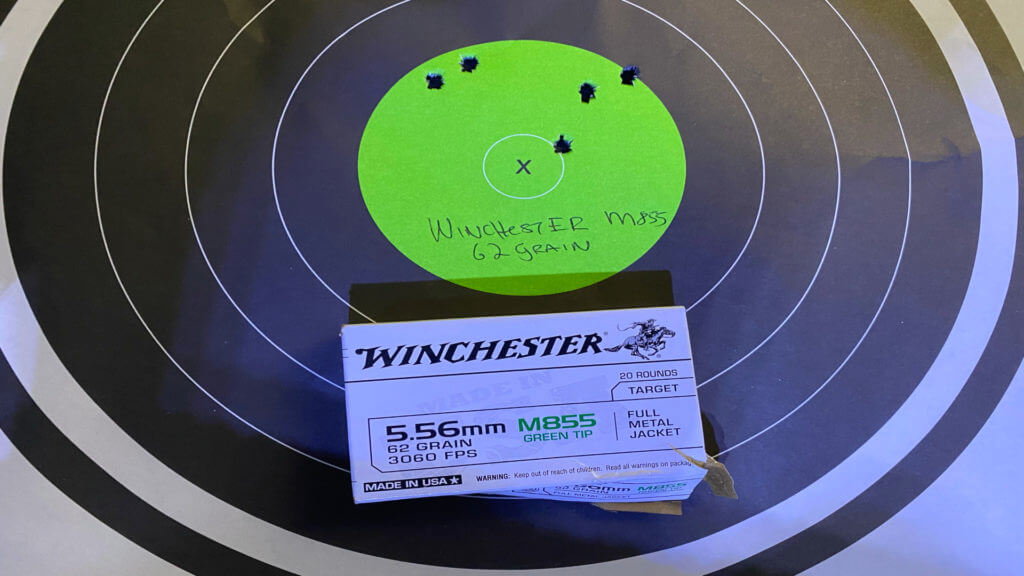
Winchester M855 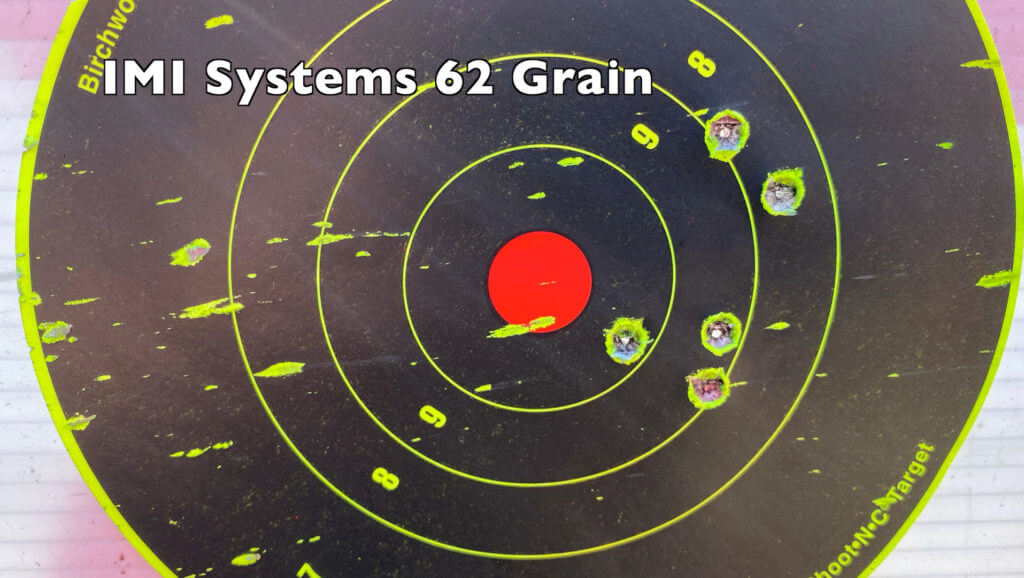
IMI Systems M855 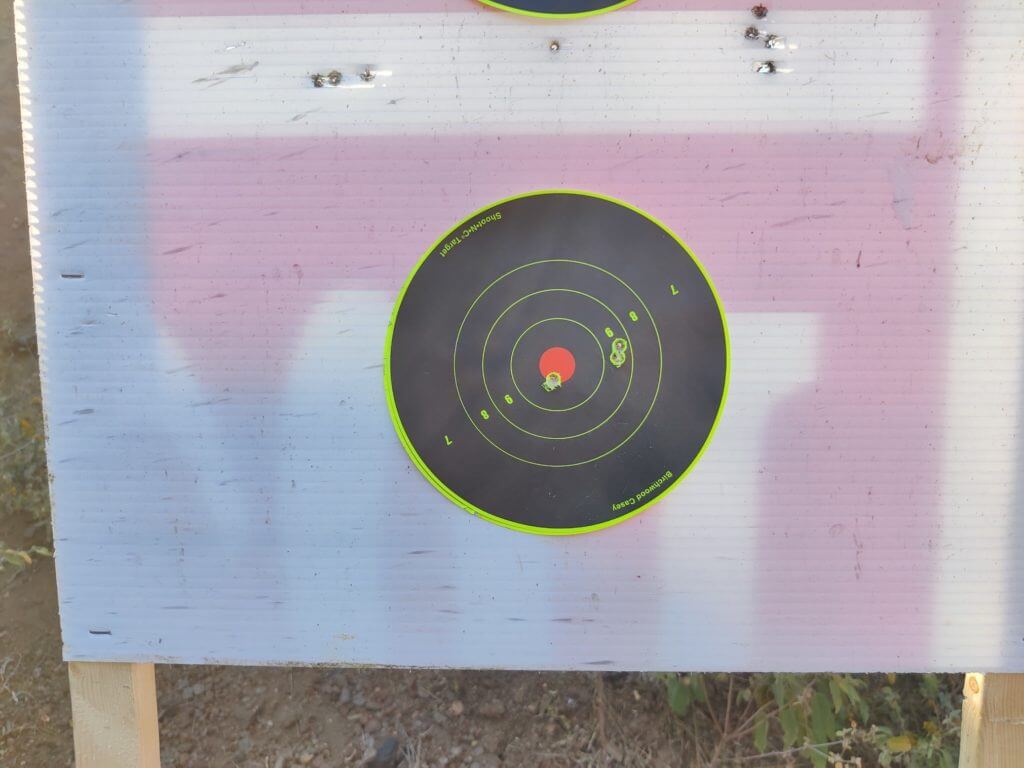
BlackHills 69 Grain Match King 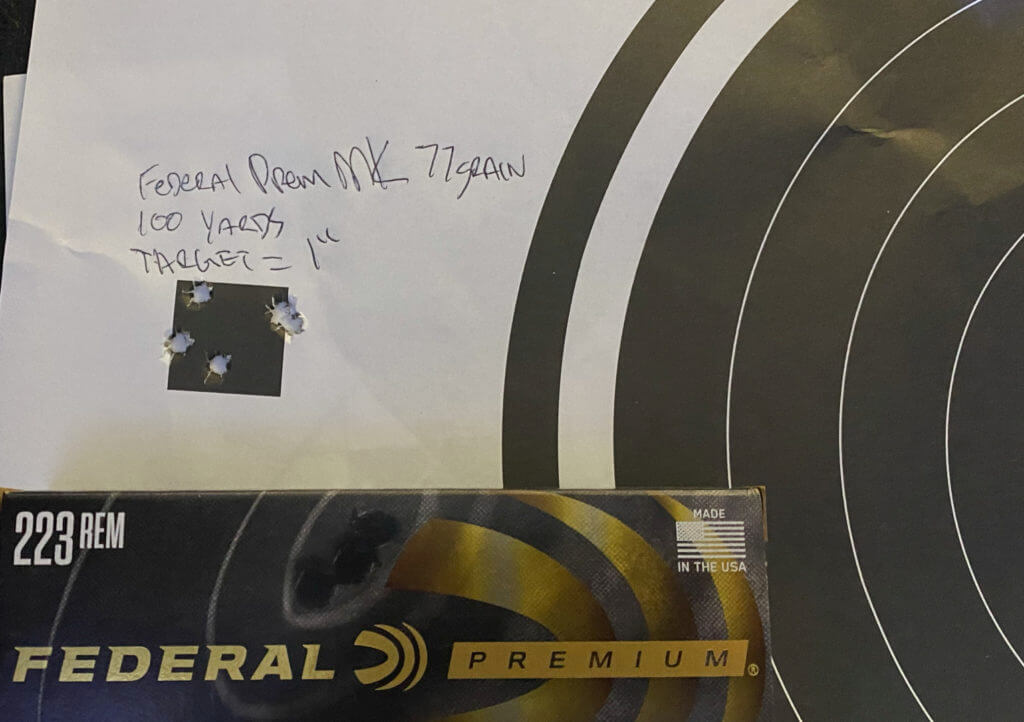
Federal 77 Grain Premium Match King
Now I’m no Clay Martin but I know my way around shooting from a bench. While I’m not surprised by the M855 results, I have had a really good experience getting sub-MOA groups using this Blackhills load on multiple different AR builds and a comparably priced Daniel Defense M4v7.
Puzzled I wanted to give this another go by removing as much human error as possible so I went to a local 100 yard indoor range to borrow a lead sled to really see what this rifle was capable of.
Pushing for Precision
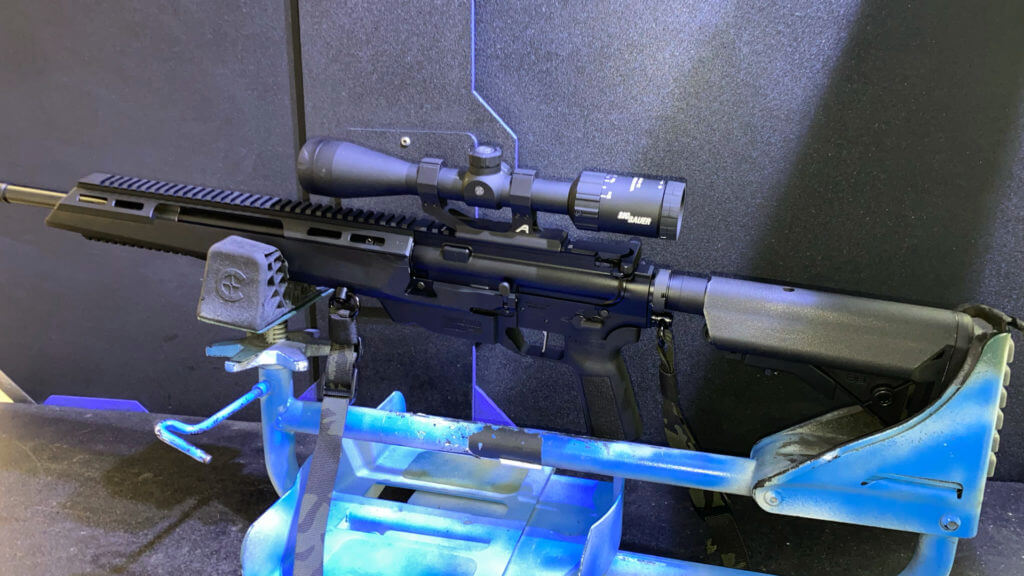
After getting situated I proceeded to run thru another 100 rounds of ammo. 5 shot groups at 100 yards allowing the barrel to cool for 15 minutes between every 25 rounds. This time I only used my match ammo. I had a few groups you could maybe argue were sub-MOA but quite frankly I expected way more from this set-up from a sled.
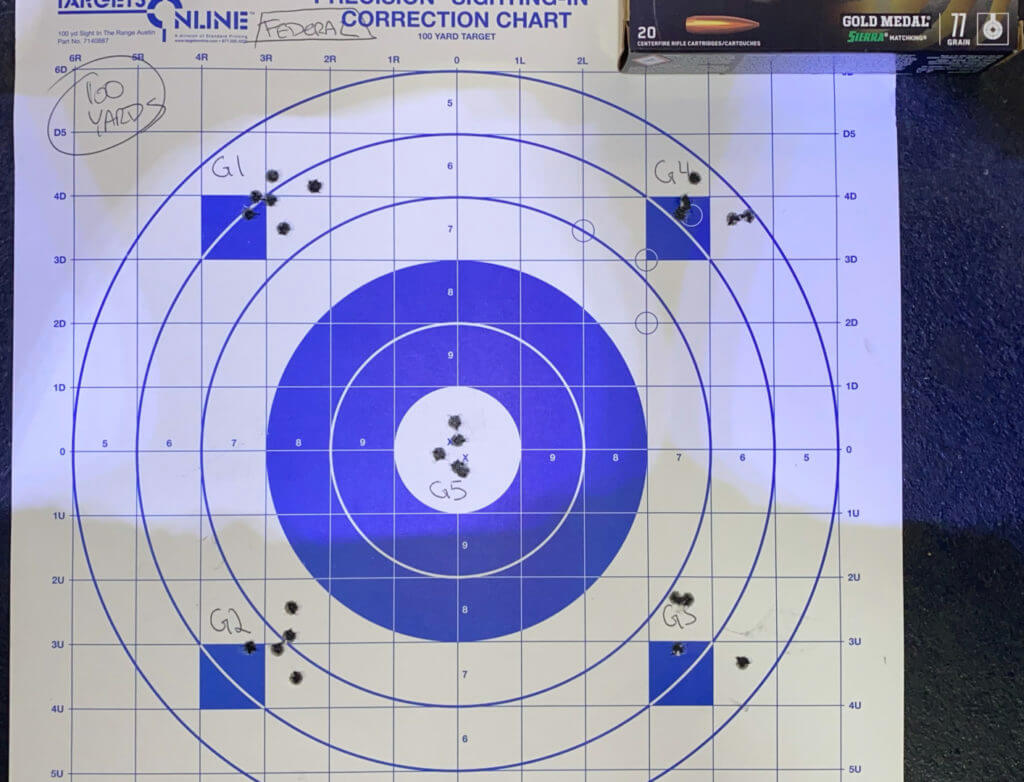
Federal Gold 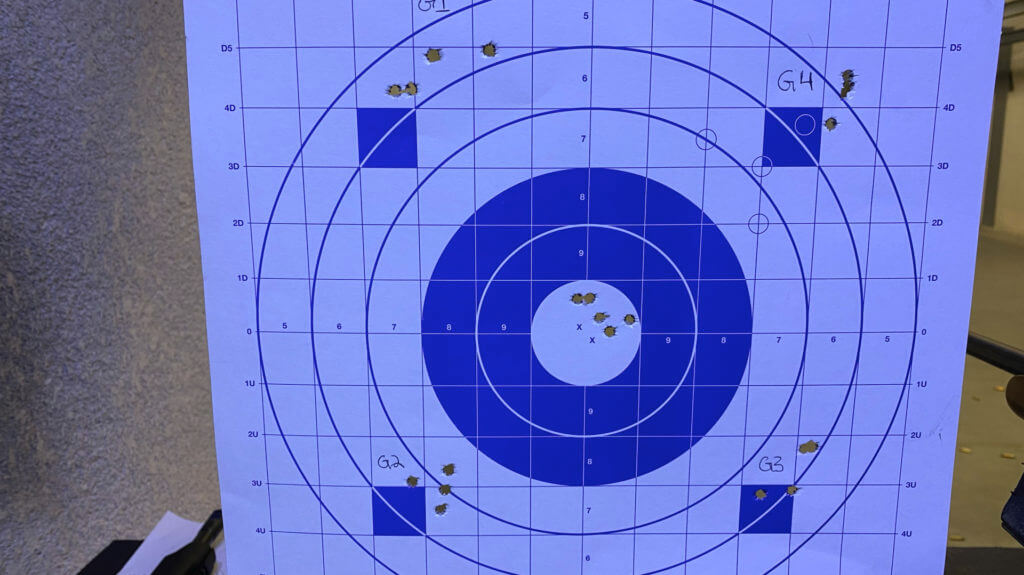
Blackhills 69 Grain Match King
Final Thoughts
At first I thought I was to blame when I was shooting from the outdoor bench. I try to blame equipment absolutely as a last resort and instead focus on what I’m doing incorrectly so I can try and fix it. After spending some time shooting from a lead sled, I began to start focusing more on the ATC’s trigger as I was noticing my trigger-finger was getting a little tired after sending 350 rounds downrange.
I don’t know anyone who would consider the match trigger on the ATC a match trigger. It’s got a heavy take-up and mushy reset. Intuitively I felt like this trigger was heavier than milspec triggers that come in factory rifles from PSA or AeroPrecision. I recently moved and my Trigger Gauge is still packed away so I had to improvise and used some weights from my home gym.
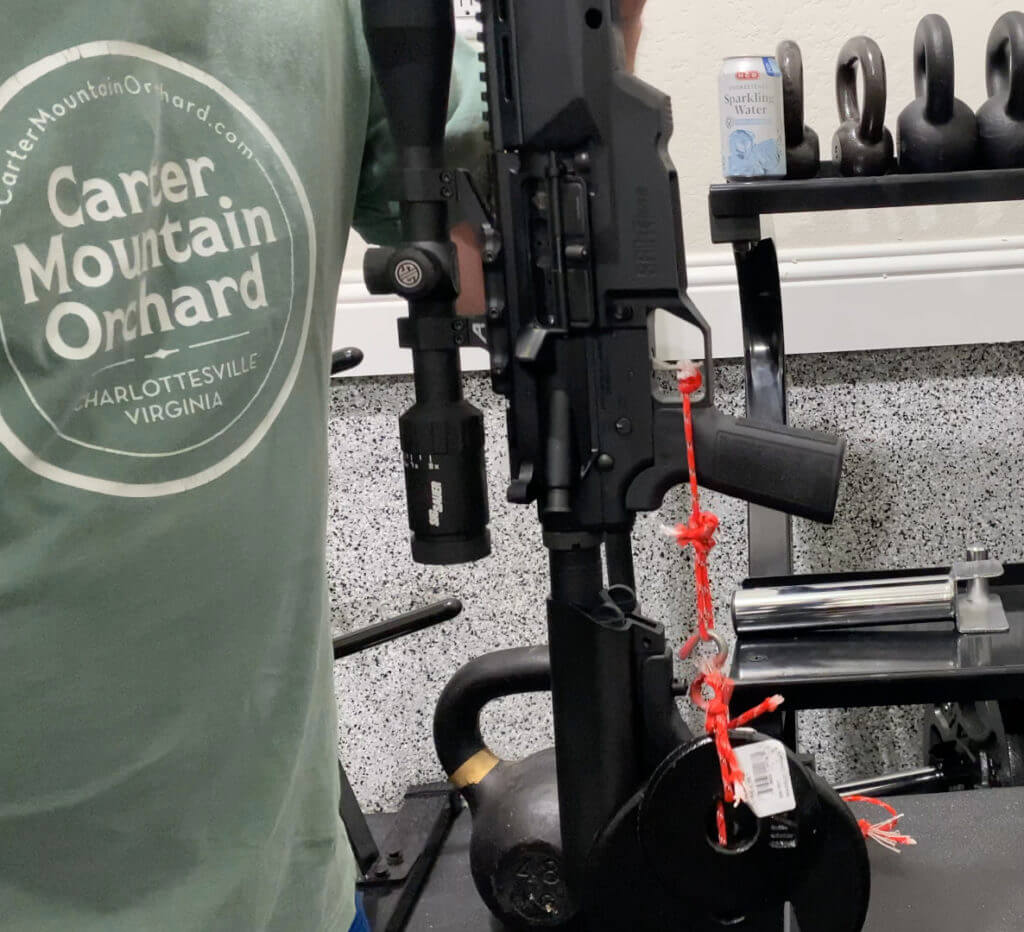
As I suspected, the trigger broke somewhere between 6.5 and 7.5 pounds. This is not what I would consider a match trigger. I have Timney, Larue, and CMC triggers in several other AR builds that consistently break between 2.5-4.5 pounds. Even a milspec trigger from PSA broke at 5.5 pounds when tested with the same weights.
I’m willing to overlook the heavy chassis and polarizing aesthetics….after-all I have seen some pretty outlandish precision rifles in my day. However, a rifle with a $1549 MSRP equipped with a “match” trigger that breaks north of 6 pounds is a little frustrating for consumers. You can buy lighter, more consistent factory AR’s at the same price point that truly delivers sub-MOA performance. After spending some time behind the Saint Edge ATC I’m confident if I swapped out the trigger for a 2.5 lb Timney or Larue I would be able to get some really impressive groups but a $1500 rifle with a sub-MOA guarantee should really already do that.
If I wanted a 10 pound precision rifle, why not go with an AR-10 chambered in 6.5 Creedmoor instead and be able to stretch out even further than 5.56/.223 is capable of?
At the end of the day, I applaud Springfield for taking risks on a new design. This is something the firearms industry should really do more of. However, the Saint Edge ATC really feels like a rifle trying to solve a problem no one is trying to solve. There are just simply better options at more affordable or comparable price points than the Saint Edge ATC for me to be able to recommend it.
If they ever decide to sell just the lowers I would get one. I like the idea but the factory usually misses the mark for me with ARs
What rifles would you recommend instead?